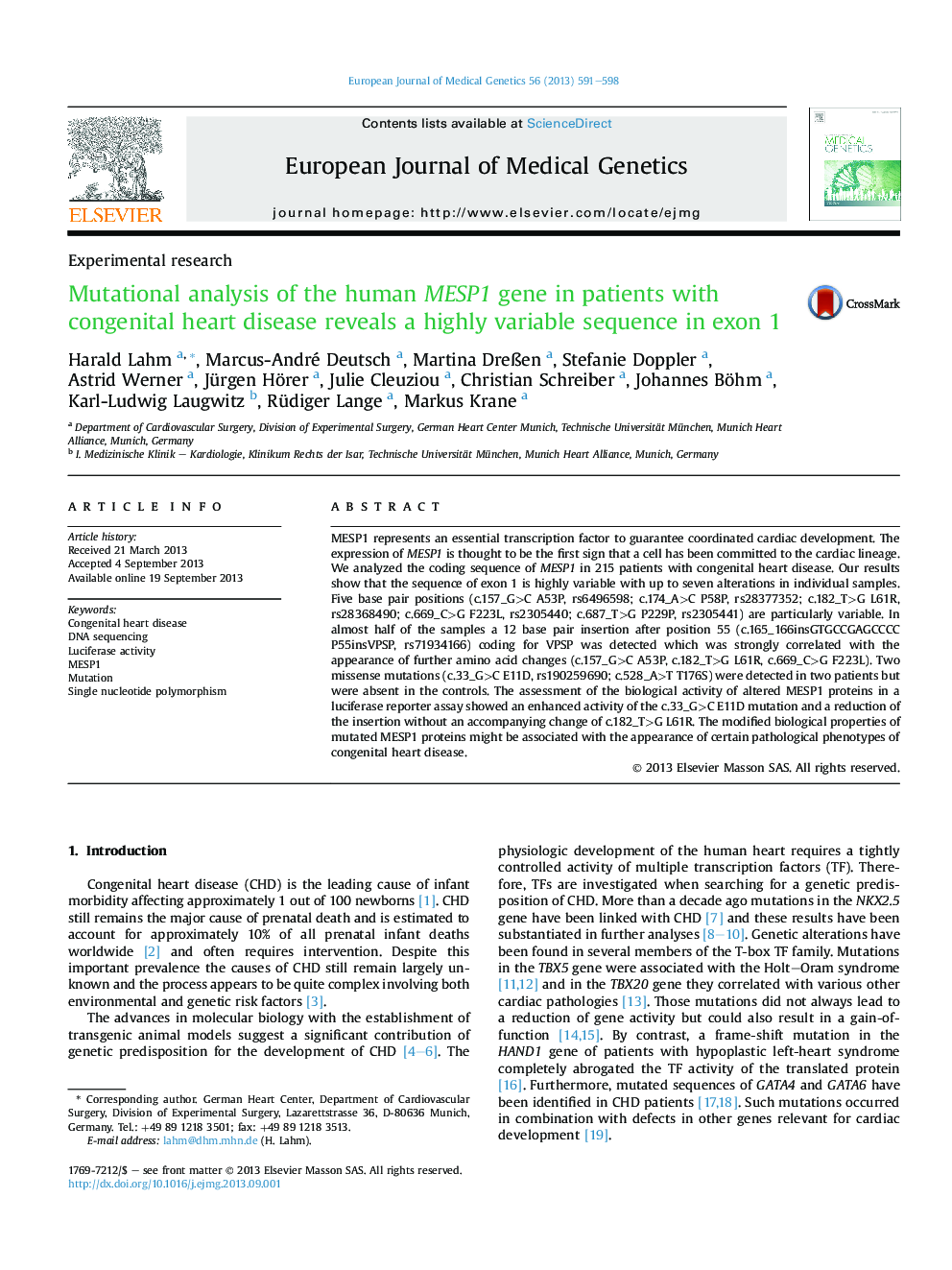| Article ID | Journal | Published Year | Pages | File Type |
|---|---|---|---|---|
| 2813928 | European Journal of Medical Genetics | 2013 | 8 Pages |
MESP1 represents an essential transcription factor to guarantee coordinated cardiac development. The expression of MESP1 is thought to be the first sign that a cell has been committed to the cardiac lineage. We analyzed the coding sequence of MESP1 in 215 patients with congenital heart disease. Our results show that the sequence of exon 1 is highly variable with up to seven alterations in individual samples. Five base pair positions (c.157_G>C A53P, rs6496598; c.174_A>C P58P, rs28377352; c.182_T>G L61R, rs28368490; c.669_C>G F223L, rs2305440; c.687_T>G P229P, rs2305441) are particularly variable. In almost half of the samples a 12 base pair insertion after position 55 (c.165_166insGTGCCGAGCCCC P55insVPSP, rs71934166) coding for VPSP was detected which was strongly correlated with the appearance of further amino acid changes (c.157_G>C A53P, c.182_T>G L61R, c.669_C>G F223L). Two missense mutations (c.33_G>C E11D, rs190259690; c.528_A>T T176S) were detected in two patients but were absent in the controls. The assessment of the biological activity of altered MESP1 proteins in a luciferase reporter assay showed an enhanced activity of the c.33_G>C E11D mutation and a reduction of the insertion without an accompanying change of c.182_T>G L61R. The modified biological properties of mutated MESP1 proteins might be associated with the appearance of certain pathological phenotypes of congenital heart disease.
